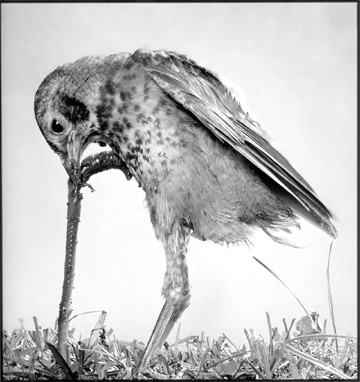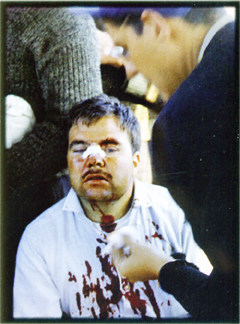When the World Was Big


High-school sweethearts Tom and Lynn Abercrombie grew up when the world was big and globe-trotting journalists lived big. A legendary National Geographic photojournalist, Tom had carte blanche to travel to exotic lands and stay until he had the pictures and story he wanted. Lynn, a freelance Geographic photographer, was at his side.
Tom, a pilot, recalled in these pages the time he bought a floatplane for an assignment in Alaska, putting it on his expense account. When the story was wrapped up, he flew it home and parked it for a month at his dock on the West River. To write about Wyoming, he rented a 40,000-acre ranch, complete with a herd of wild horses. In Yemen, a country in a state of perpetual war, the two AK-47s he bought showed up on his expense account as “auto insurance.”
“At Geographic, if you had to have a helicopter or arrange an army or paint a whole factory green, they’d back you up on it,” Tom recalled in a Bay Weekly interview.
Five years after Tom’s death in 2006 at age 75, Lynn Abercrombie and family have engineered a coffee table book that capture’s Tom’s brilliance and their exciting times. Traveling the World for National Geographic is a 351-page collection of stunning photos, accompanied by the right amount of storytelling.
The book transports us to places we may never have imagined, even in the Internet Age: in the forbidden monasteries of the Himalayas; along Oman’s ancient desert incense trail; and into a wild Afghan game of grabbing a goat carcass while riding biting, kicking horses.
Tom describes his evolution from a newspaper photographer at the Milwaukee Journal operating the four-by-five Speed Graphic, a bulky black box with bellows, to the world of 35mm, when the aim of photography changed to producing a narrative for the eye. In Milwaukee, where Tom and Lynn engineered a remarkable photo of a fledgling robin pulling a worm from the earth, he brought the bird and a patch of sod into the newspaper’s studio, where he’d made glam shots of Kim Novak the day before.
The picture appeared in Life Magazine and captured the eye of Gilbert Grosvener, editor of National Geographic and an amateur ornithologist. The phone rang in Milwaukee, and Tom Abercrombie soon would embark on his career at one of the world’s premier periodicals, with two million monthly readers.
Abercrombie was a wickedly funny man and more than a bit of a character. Once, while entertaining visitors from Beirut at his West River home, he went outside and fired off a few rounds from his .45. What could he possibly be up to?
“Just trying to make these people feel at home,” he answered.
His humor comes through in the book. Here he was, a Midwesterner and a college dropout, interviewed in a stuffy gentleman’s club in Washington for a job at the journal co-founded by Alexander Graham Bell.
“I was uncomfortably aware that I was the only one for miles around wearing a brown suit,” he writes.
The job was in hand, even though Tom was taken aside for advice: “A brown suit, Mr. Abercrombie, is perfectly all right for grouse hunting, but here in the office, a gentleman customarily wears black or dark blue,” he was told.
On his first overseas assignment, in Lebanon, he learned both the perils of foreign reporting and the clout of his magazine. Shooting an anti-regime demonstration, he had his camera smashed and was arrested. At the police station, an interrogator noticed his affiliation. “Sergeant! What are you doing, you fool. Release this man,” the official said. They retired for tea.
Journalists nowadays are expected to report a story and write it in a day (while taking pictures, blogging and sending out 140-character tweets) and might not comprehend the license enjoyed by Abercrombie and his Geographic colleagues. He spent three months in Lebanon, about average for his assignments. There the seeds were planted for his long love affair with Arab lands.
Reporters who complain about the rigors of county council coverage might take note of Abercrombie’s experience in Venezuela. He is pictured in the book with his shirt covered in blood (his own) from a cable car accident. It got worse.
“Mosquitoes, flies, fire ants covered us all with polka-dots of itchy red welts. My favorite was called locally guano de monte. It deposited its eggs under your skin. Twice I had to take a razor blade to slice open a mushy mound on my leg and squeeze out … squirming maggots. I was glad for the rum.”
Abercrombie used to say that travel was about dreaming, both before and after the trip. He would be proud of this book and mightily pleased to know that his work is still conjuring dreams.
Meet Lynn Abercrombie and get her autograph on discounted copies of her book Friday, Nov. 4, at a 7pm talk and reception at the Captain Salem Avery Museum, Shady Side. $13; rsvp: 410-867-4486; www.shadysidemuseum.org.
Read the Bay Weekly interview Traveling Man at http://bayweekly.com/old-site/year98/lead6_7.html
